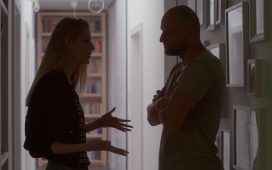A decades-old question of whether couples in long-term relationships begin to look alike over time has been answered by researchers.
In 1987, researchers suggested that spouses’ faces were not similar at the outset of marriage but became more similar, with the “degree of convergence positively correlated with couples’ ratings of marriage quality”.
According to the researchers’ hypothesis, couples tend to begin looking alike because they typically “occupy the same environments, engage in the same activities, eat the same food, and mimic each other’s emotional expressions,” all of which can influence facial features.
However, a new study by researchers at Stanford University found that there is actually no evidence that couples look more alike as time passed.
To test the theory, researchers compiled a database of 517 couples taken within two years of getting married and between 20 and 69 years later.
After compiling the photos from Google, newspaper anniversary notices and genealogy websites, the researchers showed volunteers a photo of a target person, as well as six other photos of faces, with one being their spouse.
The volunteers were asked to rank the pictures by similarity to the target individual, with researchers also performing the same experiment using facial recognition software.
According to the study, which was published in Scientific Reports, the researchers “did not find evidence for the convergence in physical appearance hypothesis: Spouses’ faces did not become more similar with time.”
“Spouses’ faces tended to be similar but did not become more similar with time, regardless of the time span between the first and the second set of pictures,” they wrote, noting that people may seek out partners who are similar looking just as they look for partners with similar values.













